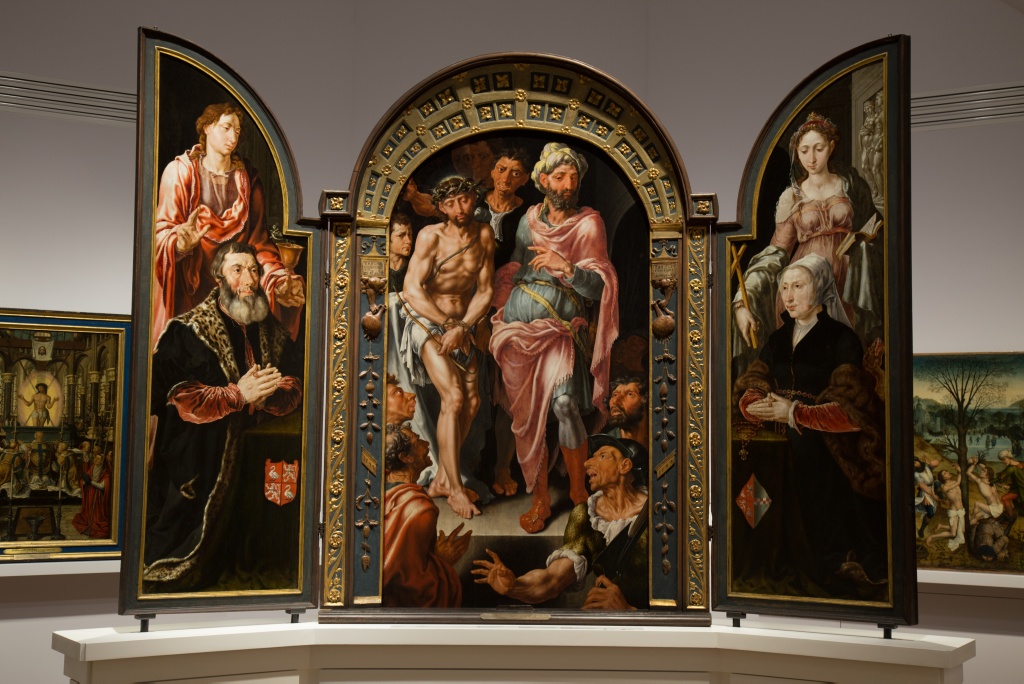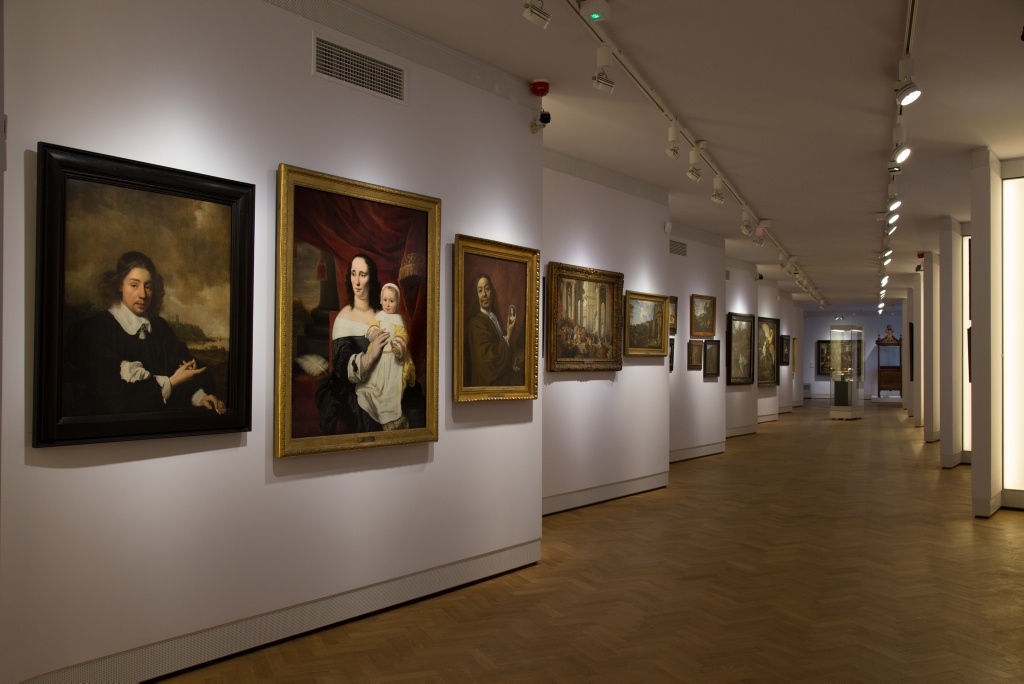This article was originally published on the CODART website as part of a special compilation of articles titled ‘Celebrating Gerdien’ which marked the end of Gerdien Verschoor’s directorship in 2019.
As one “outgoing” and one “incoming” curator, we had a lengthy exchange on the curator’s profession, and thought it would be interesting to share our cross-generational experience in this field.
How would you define the curator’s task and how did you develop your own personal philosophy as a curator?
Hanna Benesz: My main priority as a curator has always been to document and promote “my” collection. This includes researching attribution, exploring iconographical complexities, resolving problems of provenance, monitoring the state of physical preservation, all of which often result in publications. And it also includes organizing exhibitions and communicating with the public, to enable them to become better acquainted with our collection and to publicize the beauty of the artworks in our care. My personal philosophy as a curator is similar to the approach of a mother: care, attention, introducing our charges to the public, together with a little boasting. Most of my writings have been published in English, thus promoting our collection to an international readership as well as within Poland. In this context, the exhibition that best reflected my personal philosophy was (aside from European Baroque Painting, which toured Japan in 1992–1993) “The Descent from the Cross,” a Masterpiece by P.P. Rubens from the State Hermitage Museum: The Tradition of Passion Representations” in 2000. Thanks to this exhibition, marking the second millennium of Christianity, and thanks to its special sponsors, we were able to finance the comprehensive conservation and treatment of Abraham Janssens’s beautiful painting, The Lamentation of Christ. As a result, this painting, which had for years languished in oblivion, undervalued and regarded as a copy, was restored to its rightful position as a superb work by this Flemish master.
Aleksandra Janiszewska: As a young curator, I’m still developing my personal philosophy regarding my profession. On an emotional level, like Hanna, I want to devote myself to the paintings that are in my care. That includes learning more about them and sharing that knowledge. The collection has become widely known as a result of Hanna’s work (not least because of her recent summary catalog). Still, there are always new paths to discover and stories to tell. For me, there is quite a lot of detective work involved in being a curator. I was fortunate to begin my professional career with a small exhibition that I organized together with Hanna, Drama and Devotion. It focused on the research being done at the J. P. Getty Museum on “our” Ecce Homo by Maarten van Heemskerck. Technical research enabled us to gain a better understanding of the painting’s initial appearance and the process of its creation. That became my point of departure—to look at a painting as a story that has yet to be told, and to look for clues that could help to piece that story together. The beauty of this approach is that these clues can be found either in technical findings, archival sources, or on esthetic grounds. Together with Piotr Borusowski we prepared the exhibition In the Workshop of a Netherlandish Master in 2017. Our primary aim was to highlight the diversity of our collection of drawings. But we also sought to use technological research to show how artists’ workshops worked in the Early Modern Netherlands.
How has the profession changed over the past few decades and in which areas was this change most apparent?
Hanna: The profession certainly changed in fundamental ways in the course of my time as a curator. Exhibitions of the collection are more attractive today than in the past, meeting the expectations of a changing public, thanks to the greater involvement of professional designers and the growing accessibility of new technologies. On the other hand, I personally regret the demise of more academic, chronological displays of artworks, arranged in accordance with specific schools of art. These once constituted valuable aids for art history students. In the early years of my career, I believe we struck a better balance between collection-based research (emphasized as the curator’s core responsibility and encouraged by our chief curator Jan Białostocki) and temporary exhibitions. These latter events were no fewer in number or less important than today, but they were prepared as a team effort by the entire staff. Nowadays, curators appear to take less interest in collection documentation and provenance research than in devising temporary exhibitions with attractive scenography and catalogs. Worse still, rather than being expected to pursue their scholarly concerns, curators are often obliged to take charge of fundraising.
Aleksandra: I agree with Hanna that today’s curators are expected to be expert multitaskers and to be involved in every aspect of museum life. This position has advantages as well as disadvantages. While preparing an exhibition, the curator has to bear in mind that the PR department will have a say in the final decisions on the show’s visibility. You also have to write numerous announcements for promotion purposes. But it all goes with the job. I try to be a collection-based researcher as far as possible, but sometimes I have to adopt a different role and find ways of enhancing the collection’s image. The world is changing, social media and marketing are shaping consumer demand, and we have to take part in all that if we want to stay in the game. The bright side is the better accessibility of new technologies for research and the quick access to scholar publications online. It makes my work so much easier and quicker. I am not sure if I would completely agree with Hanna that there has been a decline in interest in documentation and provenance research. In my experience, it is still close to the center of attention, although the approaches may be changing. I recently went to see a great temporary exhibition, Egon Schiele: The Making of a Collection in the Belvedere, Vienna, which was based on in-depth provenance research and entwined with Austria’s difficult history in the Second World War. I think that today’s museum visitors want more than just an opportunity to see beautiful objects. They also want to understand the significance of these objects, to gain a more personal experience. The reality of creating a catalog has also changed. Catalogs are expensive productions, and the need to raise funds presents a separate challenge that puts the curator at the heart of preparations. Applying for grants, keeping the projects going, and ensuring that deadlines are met, is all time-consuming and quite stressful.
Where do you see the profession going in the future?
Hanna: I suspect that we will see museums gradually employ fewer full-time traditional curators, instead hiring external curators to take care of exhibitions. Meanwhile, those who remain as keepers of collections will be in charge of documentation and—hopefully—producing collection catalogs. Such a solution, however, would amount to a painful limitation of our noble profession. My personal advice to today’s museum curators would be to try to hold firm to the profession’s traditional image and character.
Aleksandra: In my opinion, our strength derives from the diversity of approaches that the term “curator” signifies to each one of us. The basics are the same—we all feel a sense of responsibility for the collection, and for keeping it in safe and in good order. But since we are all different, and have different areas of interest, we should be true to ourselves in our research and other projects. It is this authenticity that will give our projects real value and distinctiveness.
What about your experience of CODART? Where was the first meeting you attended and what are your memories of it?
Hanna: CODART is the best thing that happened in my entire professional life, truly a delight! Cécile Scaillierez expresses exactly what I feel in her views about CODART. From the outset, CODART displayed tremendous openness to curators from countries that had recently emerged from behind the “iron curtain”, generously holding out opportunities to become members and to attend the annual congresses. I became a CODART member when it widened its remit to include Flemish as well as Dutch art—around 1999, I believe. The first opportunity to attend the congress in Maastricht and Cologne, and to participate in the study trip to Romania, followed soon afterwards, in March 2001. As it happened, I was unfortunately unable to go, owing to a health crisis just hours before the beginning of the congress: instead of traveling to Maastricht I ended up in hospital. My first actual CODART event was the CODART VIJF congress in Bruges in March 2002 and it was a marvel! CODART became my “family” from the start, as it did for colleagues from the National Museum in Warsaw. The 2004 CODART ZEVEN congress on Dutch and Flemish Art in Poland, combined with the study trip, a few weeks later, to Gdańsk, Warsaw, and Kraków certainly sealed this unwritten certificate of our special relationship. We always did our best to be active participants in the congresses, and were delighted with many opportunities we were given to promote our Dutch and Flemish collections.
I was particularly fortunate, as I was also able to participate in some marvelous study trips (to Sweden, the northeast provinces of the Netherlands, French Flanders, and northern Italy) before the financial crisis put an end to this wonderful initiative.
Gary Schwartz, CODART’s Founding Father, laid a strong foundation for the organization, and Gerdien Verschoor added considerable verve. We Poles were especially happy with Gerdien’s appointment as director, since the older curators had known her for many years; she studied in Poland and later served as cultural attaché at the Dutch Embassy in Warsaw. The new generation of Polish curators also soon grew to love her (and who does not love Gerdien?). Poland retained its place in her heart, and it has been wonderful to talk to her in general—especially in Polish! Gerdien, we all wish you a new, fascinating and blessed chapter in your life! As for CODART—you leave behind you a fantastic office staff as well as hundreds of active members who will continue on the course you set!
Aleksandra: My first CODART meeting was in Amsterdam in 2013. I enjoyed it tremendously, since having only just taken up my new job of working with the collection, I had the good fortune to travel together with my colleagues and to see newly reopened Rijksmuseum. A young Netherlandish art curator could hardly have wished for a better start! But at the same time, I felt intimidated by the presence of all the famous participants whose names were so familiar to me. With time, from one congress to the next, I started to make new contacts. Over the past few years I have forged friendships and I am very happy to be part of CODART. I join Hanna in wishing Gerdien the very best for the future!

Piotr Borusowksi, Hanna Benesz, Aleksandra Janiszewska, Marian Turski, and Gerdien Verschoor at the Dutch Embassy in Warsaw in 2017
Hanna Benesz is the former Curator of Dutch and Flemish paintings at the National Museum in Warsaw and has been a member of CODART since 1998.
Aleksandra Janiszewska is Curator of Dutch and Flemish paintings at the National Museum in Warsaw and has been a member of CODART since 2013.


